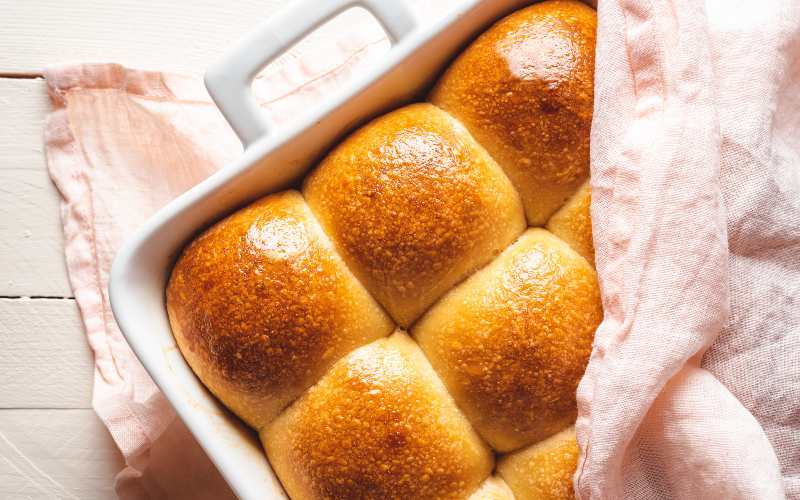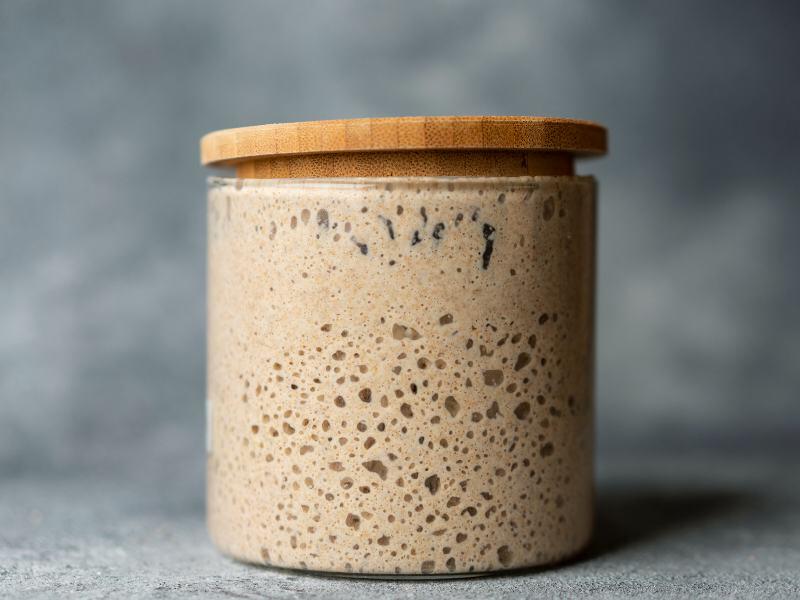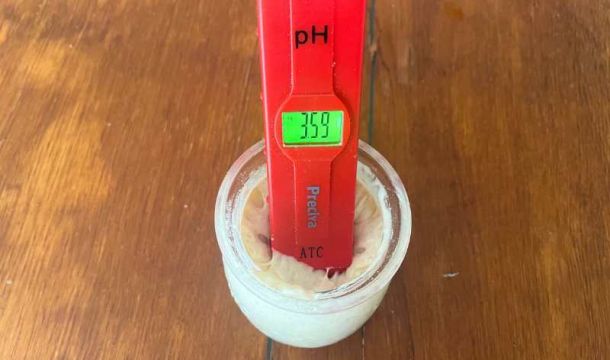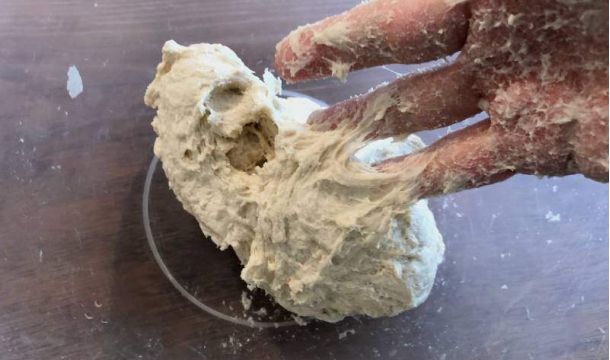
How To Make Sourdough With A Soft Crust – 12 Ideas

Sourdough is the oldest type of bread and remains massively popular today. I doubt a super soft crust was significantly important to its early adopters. With the equipment and ingredients available back then, I’m sure they would have been happy if it just didn’t break their teeth! Yet today, we can be more selective in the bread we eat -especially when making sourdough at home. Soft bread leans towards yeast-leavened bread recipes, as bread is generally more delicate when made with a shorter development time. Achieving a soft and fluffy bread when baking with sourdough is a challenge, but a soft crust… Yeah, we can do that! How can you make sourdough with a soft crust? Let’s find out.
Why is my sourdough crust too hard?
As with most things in bread baking, it’s down to you if you think your crust is too hard. That said, if the crust hurts your teeth or your jaws are clicking when you chew it, then it’s probably a problem!
How do I make my sourdough crust softer?
If the loaf is already baked, the simplest way to soften the crust is to cover the bread as it cools. Covering the bread with a cloth or towel prevents moisture from escaping, drawing it into the crust to make it deliciously soft.

Tips to make a softer sourdough crust
There are several ways to make sourdough bread crust with a soft crust. Each method tends to revolve around getting the gluten to stretch further and create a nice yet controlled oven rise (oven spring). Other methods can be used to soften sourdough bread as a whole. So what are you waiting for? You’ll never have a sourdough bread crust that’s too hard again! Here are the 12 ideas for softening a sourdough crust:
#1 Soak your flour with the correct amount of water!
Gluten is flour’s insoluble protein that forms the dough’s structure and retains the gas produced by the levain. Adding more water to a dough provides more moisture for the gluten to soak up and helps gluten stretch further.
The hydration ratio of water to flour in bread dough impacts the oven spring volume and therefore changes the crust. Bread with a high water percentage tends to expand further in the oven and make a crisper crust. This is great when combined with baking with steam for a crispy crust, but not what we are after today!
Too little water can have a detrimental effect too. If not enough water is used, the crust will be weaker, crumbly and dry. This can ends up with a hard, most unpleasant crust and crumb texture.
For a soft sourdough crust, aim for a dough that’s firm yet fluid enough for the gluten to stretch easily. Not too wet, not too dry! There’s no set rule for the water hydration of a recipe. It depends on the flour’s protein content and its water absorption qualities. A water percentage of 70% based on the weight of the flour is a good starting place. That’s 700 grams of water per 1000 grams of flour.
#2 Achieve a windowpane at the end of the first rise
For gluten to stretch into a lovely strong network that’s able to stretch and grow, it needs to develop to its potential. To do this, use an effective kneading method and knead by hand for around 10 minutes. Kneading is essential to reduce the length of the first rise – we’ll come on to this later.
No-knead doughs with a longer first rise and plenty of stretch and folds make nice bread, but for a soft crust, you’ll want to utilise other methods such as including fat in the recipe (see tip 3).
#3 Use fat in the recipe
Using fat is one of the best ways to make soft sourdough bread. Adding fat such as butter or a vegetable oil acts as a tenderiser for the gluten whilst increasing the rate of browning in the oven (Maillard effect). Fat produces softer bread as the crust browns quickly in the oven, thus shortening the baking time and keeping more moisture in the crumb. As the bread cools, water vapour escapes the crumb and softens the crust. Voila – a soft crust sourdough is produced!

#4 Delay the fat in the recipe
When using high amounts of fat in the recipe, it is best to delay their addition if possible. Fat inhibits the ability of the gluten to develop, so doughs that contain over 5% of fat have a weaker gluten structure.
Knead until the dough is almost at full development before adding the fat. Or, if your bulk fermentation stage is to last several hours, add the fat midway through. See my guide on adding extra ingredients to bread. Delaying the fat can be tricky when using a liquid fat as they contribute a portion of the liquid in the recipe, but if you can, delay the addition of fat until the gluten structure is almost formed.
#5 Shorten the baking time
The shorter the time a bread spends in the oven, the less moisture will escape it. Retaining moisture is essential for a softer crumb and key to a softer crust. The crust hardens when starch on the outer perimeter of the dough absorbs water. By keeping more moisture inside the bread at the end of baking, the crust will naturally soften as it cools.
– Don’t add steam
Steam protects the crust by delaying it from hardening in the early stages of baking. It means that bread can rises more aggressively during the oven spring creating bread with more volume. But adding steam also increases the time the bread takes to bake, which means more water will evaporate and, as we just mentioned, create a crisper crust.
In order to make sourdough bread with a soft crust, don’t add steam. The bread will still rise in the oven, just not as much.
– Increase the baking temperature
To reduce the baking time, you should consider increasing the temperature of your oven when baking. A high heat quickly sets and colours the crust, shortening the baking time. The finest authentic pizzas are baked at over 500C (950F)in less than a minute yet remain soft. You can utilise this approach with bread too!
A test: I preheated a commercial oven to 500C, loaded the bread and dropped the temperature to 200C (390F). The bread coloured so quickly that baking time had to be reduced by a third to prevent it from burning. Once cool, the bread had an incredibly soft crust, so weak that any long loaves bent over when held up.
A happy medium is preferred, so consider upping the temperature to say, 240C (265F) or even 250C (480F). You can also turn down the thermostat to 200C (390F) as the bread goes in or midway through baking to prevent it from burning.
– Increase the heat at the top of the oven
Controlling where the heat comes from in your oven will also have a massive bearing on the colourisation of the crust. Increasing the amount of heat that comes from the top of the oven accelerates the browning of the crust and shortens the bake time.
To do this, either:
- Turn the top heat element on -if your oven allows this
- Raise the height of the oven shelf to bring it closer to the top element
- Switch the grill or broiler on for the last few minutes of baking if you don’t have a top heat setting
#6 Boost your oven spring with extra sugars
As discussed, you won’t be adding much steam to the oven (or any at all) for sourdough with a soft crust. But, you’ll still want your bread to rise in the oven to aerate the crumb and prevent your sourdough from being too dense.
For the biggest oven spring gain, you’ll want plenty of sugars available in the dough when it goes into the oven. Sugars derived from the flour feed the yeast and bacteria, rapidly creating CO2 gas in the oven. But, during the first and second rise, the sourdoughs fermentation process will consume many of these sugars. If too many are consumed, the supply is depleted by the time the dough goes into the oven, resulting in a weak oven spring.
To ensure there are plenty of sugars available for the oven spring, you have a few options. The first is to add extra sugar to the recipe. Too much sweetness can be a bit unpleasant in bread, so honey is my preferred sweetener when making sourdough as it adds a more prominent flavour than table sugar.
You might also want to consider adding active malt flour to your recipe. Malt flour provides additional enzymes which break down more starches in the flour to release extra sugars.
#7 Perfect your starter
Yeast-leavened dough that has been proofed quickly is often soft. The reason for fast-proofed bread being softer is yeast respiration. Yeast respires when yeast and simple sugars are in the presence of oxygen. It’s the most efficient way for bread dough to rise, and when it is the prevailing action of the yeast the dough rises quickest. The bonus for fast-rising dough is that it has more significant gains in the oven spring, which is essential when baking time is reduced to make soft-crusted bread as it creates a lighter crumb texture. It’s no good making bread with a soft crust if it doesn’t taste nice!

Yeast fermentation and lactofermentative routes are other ways gas is produced in sourdough. Lactic Acid Bacteria are responsible for around 50% of gas production in a typical sourdough. This creates an almost impossible situation where we want more levain activity, but without all the effects of the levain!
Hmmm, this is the challenge of soft sourdough baking, it’s not really the right levain. So, to create a softer crumb you’ll want to reduce both fermentation routes and boost yeast respiration. To achieve this, first off, look at when you use your starter. After a starter has been fed, initially yeast cells multiply. After the number of yeast cells reaches its peak (due to the acidity of the starter), the number of lactic acid bacteria surpasses yeast cells. If the starter sits at the top of its peak, acid bacteria increases to maximum volume which is perfect if you want your sourdough bread to taste more sour. Whilst this produces a more active levain, for a softer crumb you may find using your starter when it’s risen just 20-40% supplies your dough with more yeast cells to produce a more vibrant oven rise. It’s also the method chosen by Chad Robertson in his bakery, Tartine to produce bread that tastes sweet and light.
This comes on to my next point:
#8 Use plenty of starter to make a softer crumb
We want our sourdough bread to be lighter tasting and have a close-knit crumb structure. To achieve this, we need the dough to rise quickly without the development of lactic and acetic acids. One of the ways to do this is to reduce the length of the first rise. One structure to follow which achieves this is to:
- Use over 30% starter weight against the total amount of flour
- Knead the bread for longer than normal sourdough.
- Increase the dough proofing temperature above 30C (86F)
- Reduce the time of the bulk fermentation to 2 hours max
- Shape and then proof above 30C (86F)
Another solution is to gently mix your dough and place it in the refrigerator overnight for a long first rise. As dough matures in the fridge, it breaks down additional starches to boost the oven spring whilst fermentation the cool temperatures reduce fermentation activity.
Use the poke test to check when it’s ready to go into the oven.
#9 Use high protein flour
When using a short development time use high-protein flour. The extra protein enables the dough to trap more gas during the early stages of its rise, thus shortening the length of the second rise. Switch all-purpose or a standard baker’s flour to a super high-protein flour with 13% protein or higher.
#10 Use a bread pan with a lid – Pullman loaf tin
The supersoft Pullman or supermarket sliced bread are baked in a bread tin with a lid. There’s a good reason for this as the cover retains moisture in the bread, making the crust soft. A Pullman or sandwich tin with a lid can be used to proof and bake your bread and is a fantastically easy fix to make softer sourdough.

#11 Add butter to the crust as it cools
It’s not my go-to solution, but rubbing a knob of butter over the crust as it cools will soften it. For sweet bread, a sugar glaze works just the same and adds a further sweet dimension.
#12 Wrap it!
Wrapping bread in a plastic bag or tea towel as it cools encourages moisture to be retained in the crust. It’s a great way to soften bread, yet the increased moisture increases the risk of mould and starch retrogradation.
I recommend waiting for your sourdough bread to cool until below 35C (95F) before wrapping and storing. This is best done in a plastic bag or something sealed to retain the moisture in the bread. Consume within three days before mould sets in.
So, how to make sourdough with a soft crust?
There are loads of ideas in this article to make softer sourdough, so let’s recap! One of the best tricks is to shorten the baking time, your bread may come out of the oven crusty at first, but it’ll soften up as it cools. The next trick is to get good oven spring, so your soft sourdough loaf isn’t also too dense. You’ll also want to make a good dough that passes the windowpane test, and for added texture benefits, you might want to add fats or sugars to the recipe.
Once you’ve made your soft bread, all you need to do is store it in a sealed bag and drop a comment below to let me know how you got on!
If you’ve enjoyed this article and wish to treat me to a coffee, you can by following the link below – Thanks x

Hi, I’m Gareth Busby, a baking coach, head baker and bread-baking fanatic! My aim is to use science, techniques and 15 years of baking experience to help you become a better baker.
Table of Contents
- Why is my sourdough crust too hard?
- How do I make my sourdough crust softer?
- Tips to make a softer sourdough crust
- #1 Soak your flour with the correct amount of water!
- #2 Achieve a windowpane at the end of the first rise
- #3 Use fat in the recipe
- #4 Delay the fat in the recipe
- #5 Shorten the baking time
- #6 Boost your oven spring with extra sugars
- #7 Perfect your starter
- #8 Use plenty of starter to make a softer crumb
- #9 Use high protein flour
- #10 Use a bread pan with a lid – Pullman loaf tin
- #11 Add butter to the crust as it cools
- #12 Wrap it!
- So, how to make sourdough with a soft crust?
Related Recipes
Related Articles
Keep up to date with the latest Articles, Recipes & Bread Baking info by joining my mailing list
Join The Weekly Bread Baker's Newsletter!
Latest Articles
Baking Categories
Disclaimer
Address
8 Woodland Avenue,
Worthing
West Sussex
BN13 3AF
UK








Leave a Reply